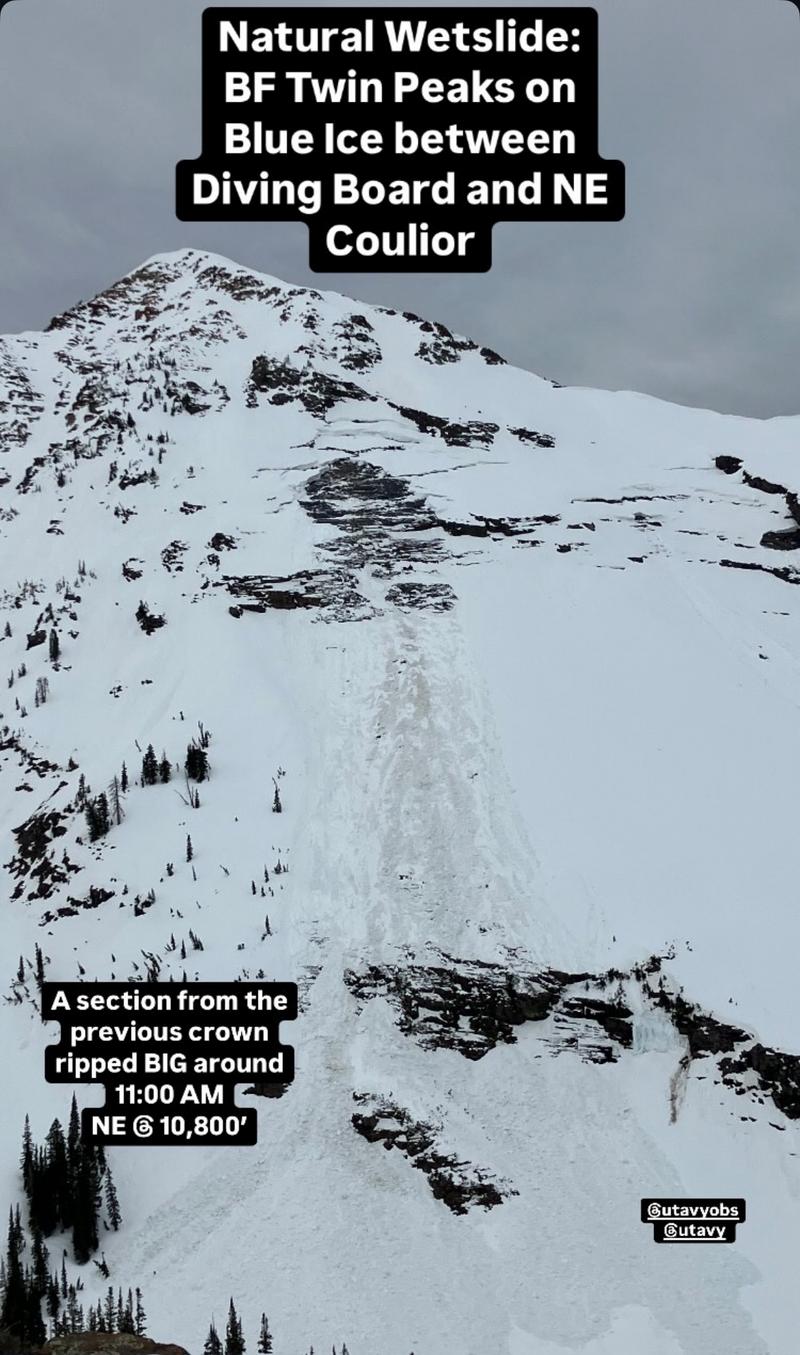Forecast for the Salt Lake Area Mountains

Issued by Nikki Champion on
Sunday morning, April 13, 2025
Sunday morning, April 13, 2025
The snowpack is generally stable, and avalanche danger is LOW this morning with Normal Caution advised. The main concern is wet loose avalanches on steep, sun-exposed slopes this afternoon as skies clear and temperatures rise. If you’re seeing rollerballs or the snow’s getting wet and unsupportable, it’s time to move off those slopes.
- Cornices may be unstable and could collapse, potentially triggering slides on slopes below.
- Roof avalanches remain a hazard. Keep people and pets clear of steep, snow-loaded roofs.
- Glide avalanches are unpredictable and dangerous. Avoid known glide paths entirely.
Low avalanche danger does not mean "no avalanche danger". Stay flexible and be ready to adjust your plans as conditions change.

Low
Moderate
Considerable
High
Extreme
Learn how to read the forecast here






